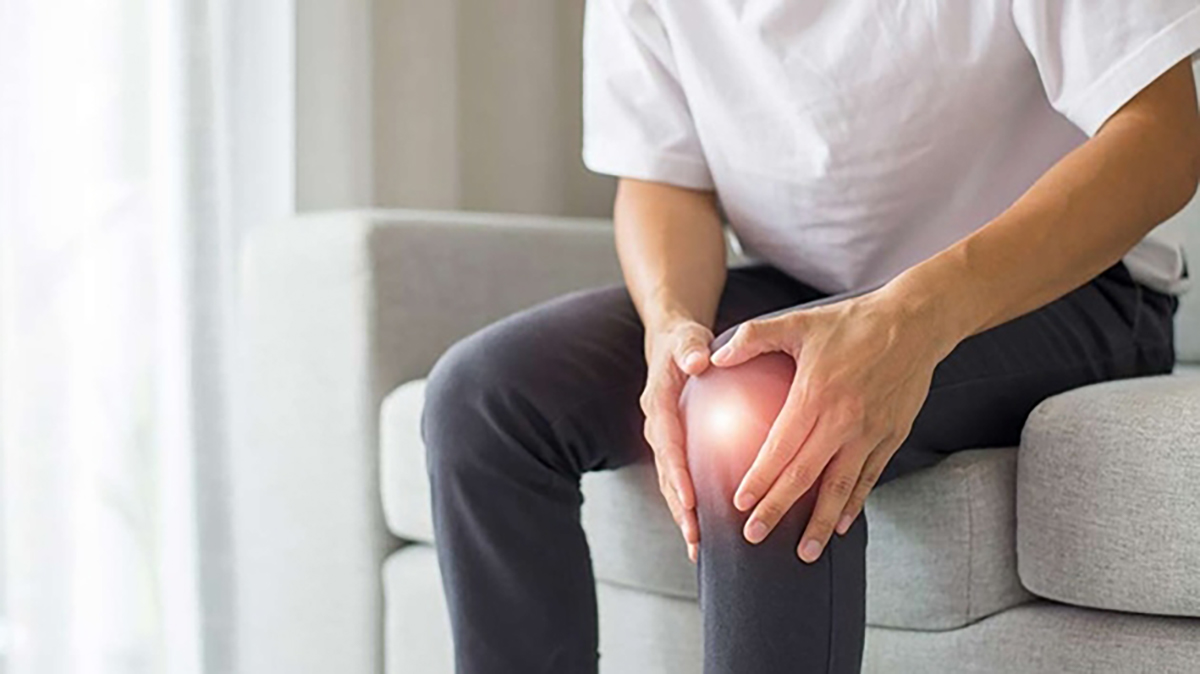Reduced blood circulation, dilation of tissues, sedentary, weight gain... are factors that cause knees to hurt more when the weather changes.
Cold weather can provoke knee pain in all subjects. However, in older people who have underlying medical conditions of knee arthritis, knee osteoarthritis, gout, or a previous knee injury, pain when it turns cold is more pronounced.
First of all, cold weather causes the blood vessels around the knee joint to constrict, thereby reducing blood flow to the knee. The synovial membrane and bones under the cartilage of the knee joint that do not receive enough nourishing blood will become irritated, triggering pain.
The cold weather and reduced atmospheric pressure also cause the tissues, fluids and gases around the knee joint to expand, pressing on the nerves, causing a feeling of soreness and discomfort. Moreover, to adapt to cold weather, the body tries to regulate the internal temperature by contracting muscles. Muscle contraction reduces the amount of oxygen supplied to the muscle bundles around the knee joint, causing muscles to stiffen and lack flexibility, increasing pain in the knee.
In particular, during the cold winter months, most people tend to be sedentary, both for fun and physical exercise. Inactivity causes articular cartilage not to absorb enough nutrients, becomes less elastic and supple, increasing the level of knee pain when moving. Not to mention, inactivity is also the reason why many people have uncontrolled weight gain. Some surveys show that people can gain an average of 2.3 to 3.2kg in the winter months. Meanwhile, for every nearly 0.5kg of extra weight, the pressure on the knee increases by about 1.8kg. Pressure from excess weight is also the reason why knees are prone to soreness in the cold season.

In people who have had arthritis or knee surgery, cold weather and high humidity can make the nerves around the knee more sensitive than usual. At this time, even a small external impact can make many people feel more intense knee pain than a warm sunny day.
To reduce knee pain when the weather turns cold, note that patients pay attention to keep the whole body warm to promote blood circulation to the joints. For knees, when going out on the street or exercising, you can use a knee belt or band to both increase warmth and reduce external impact on the knee joint.
When suffering from knee pain, many people have a "lazy" mentality because they think that the more they exercise, the more painful it is. However, if you rest completely, the articular cartilage will poorly absorb nutrients to regenerate, gradually becoming dry, increasing the risk of joint pain. Therefore, on days when the temperature drops deeply, instead of jogging or cycling outdoors, people can practice indoors with gentle disciplines such as yoga, walking on the machine ...
Taking a warm bath and massaging the knee with a hot high also contributes to the effective soothing of knee pain when it is cold. At the same time, each person also needs to pay attention to drinking enough water to ensure moisture for the joints, help maintain flexibility and reduce wear and tear of articular cartilage, bones under the cartilage. According to studies, the ideal amount of water per day can be based on the standard of 40ml / kg of body weight, preferably drinking warm water in winter.
To keep the knee joint moving flexibly and smoothly, each person can also enhance joint care nutrients, in addition, massaging the knee with Subsyde-M helps reduce pain, swelling, arthritis effectively when the weather changes.
In case the above measures have been applied but the pain in the knee joint is not relieved, patients should visit specialists to determine the right cause and have an appropriate treatment regimen.

See more product information here.